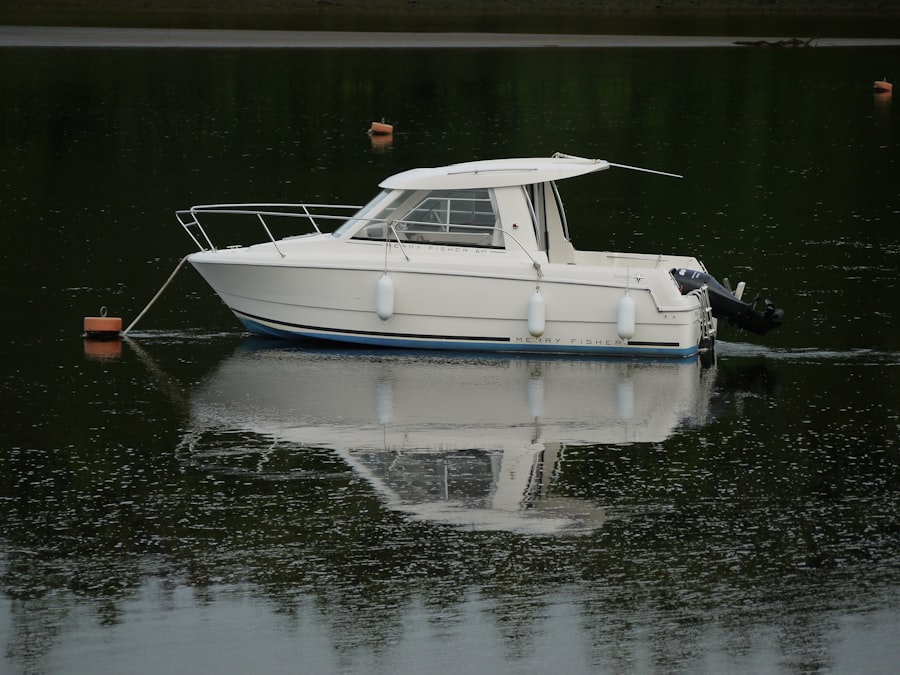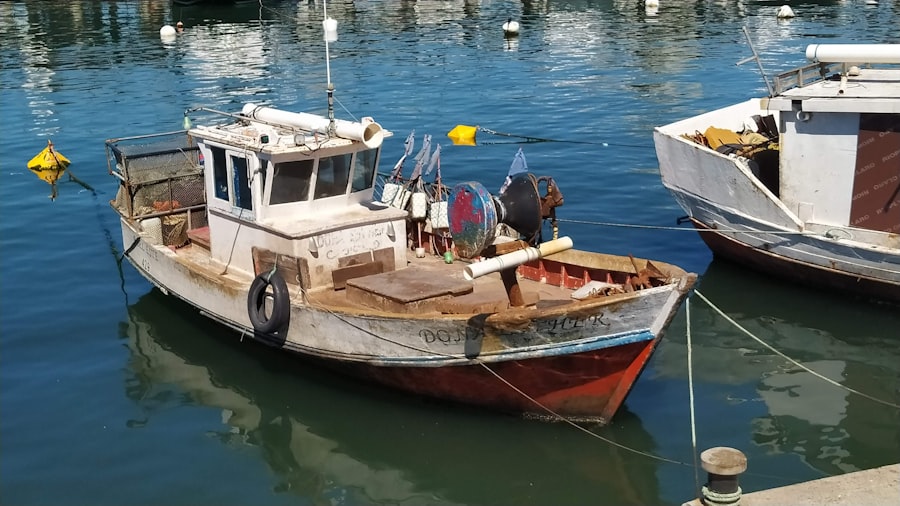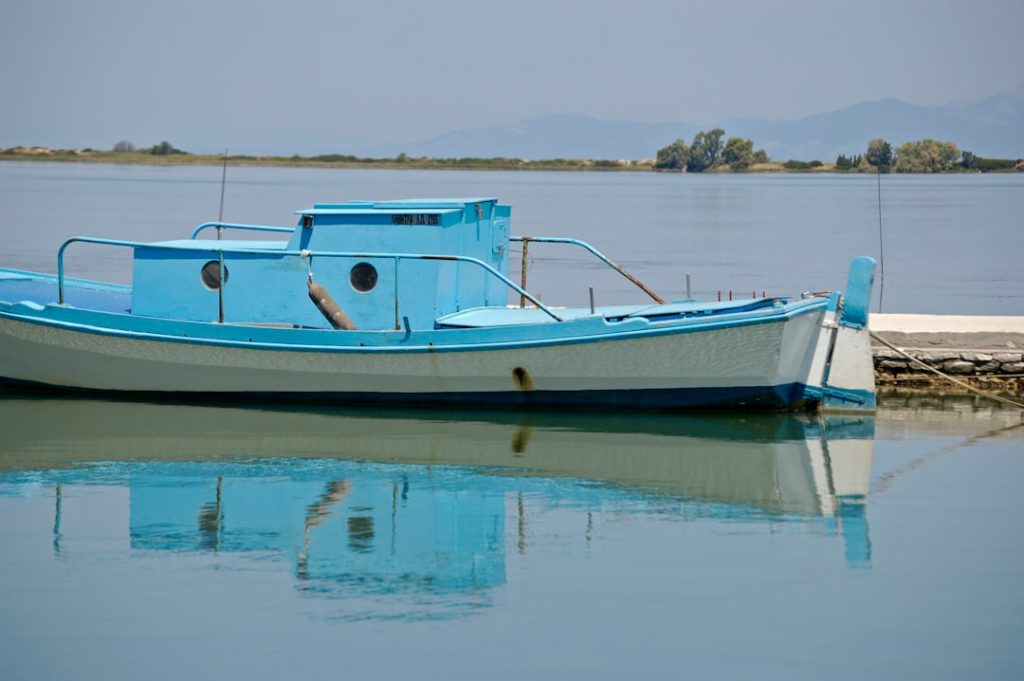John boats, often referred to as flat-bottomed boats, have a storied history that dates back to the early 20th century. Originally designed for shallow waters, these vessels are characterized by their flat hulls, which allow them to navigate through marshes, rivers, and lakes with ease. The design of a John boat is particularly advantageous for fishing and hunting, as it provides stability and ample space for gear.
Unlike traditional V-hull boats, which are better suited for open water, John boats excel in environments where maneuverability and shallow draft are essential. One of the defining features of John boats is their versatility. They can be constructed from various materials, including aluminum, fiberglass, and wood, each offering distinct advantages.
Aluminum John boats are particularly popular due to their lightweight nature and resistance to corrosion, making them ideal for freshwater environments. On the other hand, wooden John boats provide a classic aesthetic and can be customized to fit specific needs. This adaptability extends beyond materials; John boats can be outfitted with various accessories such as motors, seating arrangements, and storage solutions, making them suitable for a wide range of activities from leisurely fishing trips to serious hunting expeditions.
Key Takeaways
- John boats are unique for their flat-bottom design, making them stable and ideal for shallow waters.
- Key factors when choosing a John boat include size, material, and intended use.
- John boats can be found for sale at dealerships, online marketplaces, and local classifieds.
- Inspecting a used John boat involves checking the hull, motor, and overall condition carefully.
- Customization options include adding seats, storage, and upgraded motors to enhance performance and comfort.
Factors to Consider When Choosing a John Boat
When selecting a John boat, several critical factors come into play that can significantly influence your experience on the water. First and foremost is the size of the boat. John boats come in various lengths and widths, typically ranging from 10 to 20 feet.
The size you choose should depend on your intended use and the number of passengers you plan to accommodate. A smaller boat may be easier to maneuver and transport, while a larger model can provide more stability and space for gear. Additionally, consider the weight capacity of the boat; exceeding this limit can compromise safety and performance.
Another essential factor is the type of material used in the construction of the boat. Aluminum is favored for its durability and lightweight properties, making it easier to handle and transport. However, fiberglass offers a smoother ride and can be more aesthetically pleasing.
Wood, while beautiful and traditional, requires more maintenance to prevent rot and damage from water exposure. Each material has its pros and cons, so it’s crucial to assess your priorities—whether they lean towards durability, maintenance ease, or visual appeal—before making a decision.
Where to Find John Boats for Sale

Finding a John boat for sale can be an exciting venture, as there are numerous avenues to explore. One of the most common places to start is local boat dealerships that specialize in fishing or recreational vessels. These dealerships often carry new models from reputable manufacturers and may also have a selection of used boats.
Visiting a dealership allows potential buyers to inspect the boats in person, ask questions about specifications, and even take a test ride if possible. Online marketplaces have also become increasingly popular for purchasing John boats. Websites like Craigslist, eBay, and specialized boating forums offer listings from private sellers and dealers alike.
When browsing online, it’s essential to conduct thorough research on the seller’s reputation and the condition of the boat being offered. Additionally, social media platforms often have groups dedicated to buying and selling boats where enthusiasts share listings and advice. This digital approach can yield great deals but requires diligence in verifying the authenticity of listings.
Tips for Inspecting a Used John Boat
| Inspection Tip | What to Check | Reason | Recommended Action |
|---|---|---|---|
| Hull Condition | Look for cracks, holes, or patches in the hull | Ensures boat integrity and prevents leaks | Inspect thoroughly; avoid boats with major damage |
| Transom Strength | Check for rot, cracks, or softness in the transom | Supports the motor; weak transom can be dangerous | Press firmly and look for flex; avoid if compromised |
| Seats and Flooring | Inspect for rot, rust, or loose fittings | Comfort and safety during use | Replace or repair damaged parts as needed |
| Hardware and Fasteners | Check bolts, screws, and rivets for corrosion | Prevents structural failure and loose parts | Replace corroded hardware before use |
| Motor Mount | Ensure motor mount is secure and undamaged | Critical for safe motor attachment | Test stability; repair or reinforce if weak |
| Drain Plug | Verify presence and condition of drain plug | Prevents water from entering the boat | Replace missing or damaged plugs immediately |
| Overall Cleanliness | Look for signs of mold, mildew, or excessive dirt | Indicates how well the boat was maintained | Clean thoroughly; consider maintenance history |
| Registration and Documentation | Check for valid registration and ownership papers | Ensures legal purchase and use | Verify documents before finalizing purchase |
When considering a used John boat, a meticulous inspection is paramount to ensure you’re making a sound investment. Start by examining the hull for any signs of damage or wear. Look for cracks, dents, or signs of repair that could indicate previous issues.
Pay particular attention to the transom—the part of the boat that supports the motor—as this area is critical for structural integrity. A weak or damaged transom can lead to serious safety concerns when out on the water. Next, assess the interior of the boat.
Check for any signs of water damage or rot, especially if the boat is made of wood. Inspect the flooring for softness or sponginess, which could indicate underlying issues. Additionally, evaluate any installed accessories such as seats, storage compartments, or electronics.
Ensure that all components are functional and in good condition. If possible, request a test run on the water to gauge how the boat performs under real conditions; this can reveal potential problems that may not be apparent during a static inspection.
Customizing Your John Boat: Options and Upgrades
One of the appealing aspects of owning a John boat is the potential for customization. Depending on your specific needs and preferences, there are numerous upgrades available that can enhance both functionality and comfort. For instance, adding a motor can significantly increase your boat’s speed and range compared to paddling or using oars alone.
Electric trolling motors are particularly popular among anglers for their quiet operation and efficiency in navigating through shallow waters. In addition to propulsion upgrades, consider enhancing your boat’s storage capabilities. Many owners opt for custom-built storage compartments or tackle boxes that fit snugly within the boat’s design.
This not only keeps gear organized but also maximizes space efficiency. Furthermore, adding accessories such as rod holders, fish finders, or even a canopy can transform your John boat into a more versatile vessel tailored to your activities—be it fishing, hunting, or leisurely cruising.
Maintenance and Care for Your John Boat

Proper maintenance is crucial for extending the lifespan of your John boat and ensuring optimal performance on the water. Regular cleaning is essential; after each outing, rinse off any dirt or debris that may have accumulated on the hull or interior surfaces. For aluminum boats, using a mild soap solution can help prevent oxidation and maintain the finish.
If your boat has a wooden structure, applying a protective sealant periodically will help guard against moisture damage. In addition to cleaning, routine inspections should be part of your maintenance regimen. Check all hardware such as screws, bolts, and fittings for signs of corrosion or loosening over time.
Ensure that any electrical components are functioning correctly and that batteries are charged if applicable. If your John boat has a motor, follow the manufacturer’s guidelines for maintenance schedules—this typically includes oil changes, filter replacements, and checking fuel lines for leaks.
Financing Your John Boat Purchase
Financing options for purchasing a John boat can vary widely based on factors such as price point, credit history, and whether you’re buying new or used. Many dealerships offer financing plans that allow buyers to spread payments over time while enjoying immediate access to their new vessel. It’s advisable to shop around for competitive interest rates and terms that suit your budget; some lenders specialize in recreational vehicle financing and may offer favorable conditions.
For those considering used boats, personal loans can be an alternative financing route if dealership financing isn’t available or appealing. Credit unions often provide lower interest rates compared to traditional banks; thus, it’s worth exploring membership options if you’re not already affiliated with one. Additionally, some buyers may choose to leverage home equity loans or lines of credit as a means to finance their purchase—though this approach carries its own risks and should be carefully considered.
The Benefits of Owning a John Boat
Owning a John boat comes with numerous benefits that extend beyond mere recreational enjoyment. For many enthusiasts, these boats provide unparalleled access to remote fishing spots or hunting grounds that larger vessels cannot reach due to their size or draft limitations. The shallow draft of a John boat allows it to glide over marshy areas or navigate through narrow channels with ease—an invaluable asset for avid anglers seeking out hidden gems in local waterways.
Moreover, John boats are often more affordable than other types of recreational vessels, making them an attractive option for budget-conscious buyers. Their simplicity in design means lower maintenance costs over time compared to more complex boats equipped with advanced technology or features. This affordability extends not only to initial purchase prices but also to fuel efficiency; many owners find that smaller motors consume less fuel than larger engines typically found on bigger boats.
In addition to practical benefits, owning a John boat fosters opportunities for social interaction and bonding with family and friends. Whether it’s spending a day fishing with loved ones or embarking on weekend camping trips along scenic riversides, these experiences create lasting memories that enhance relationships and promote outdoor lifestyles. The versatility of John boats allows owners to tailor their adventures according to personal interests—be it fishing tournaments or leisurely explorations—making them an enduring choice for outdoor enthusiasts across various demographics.


